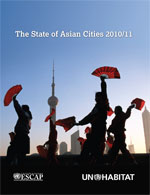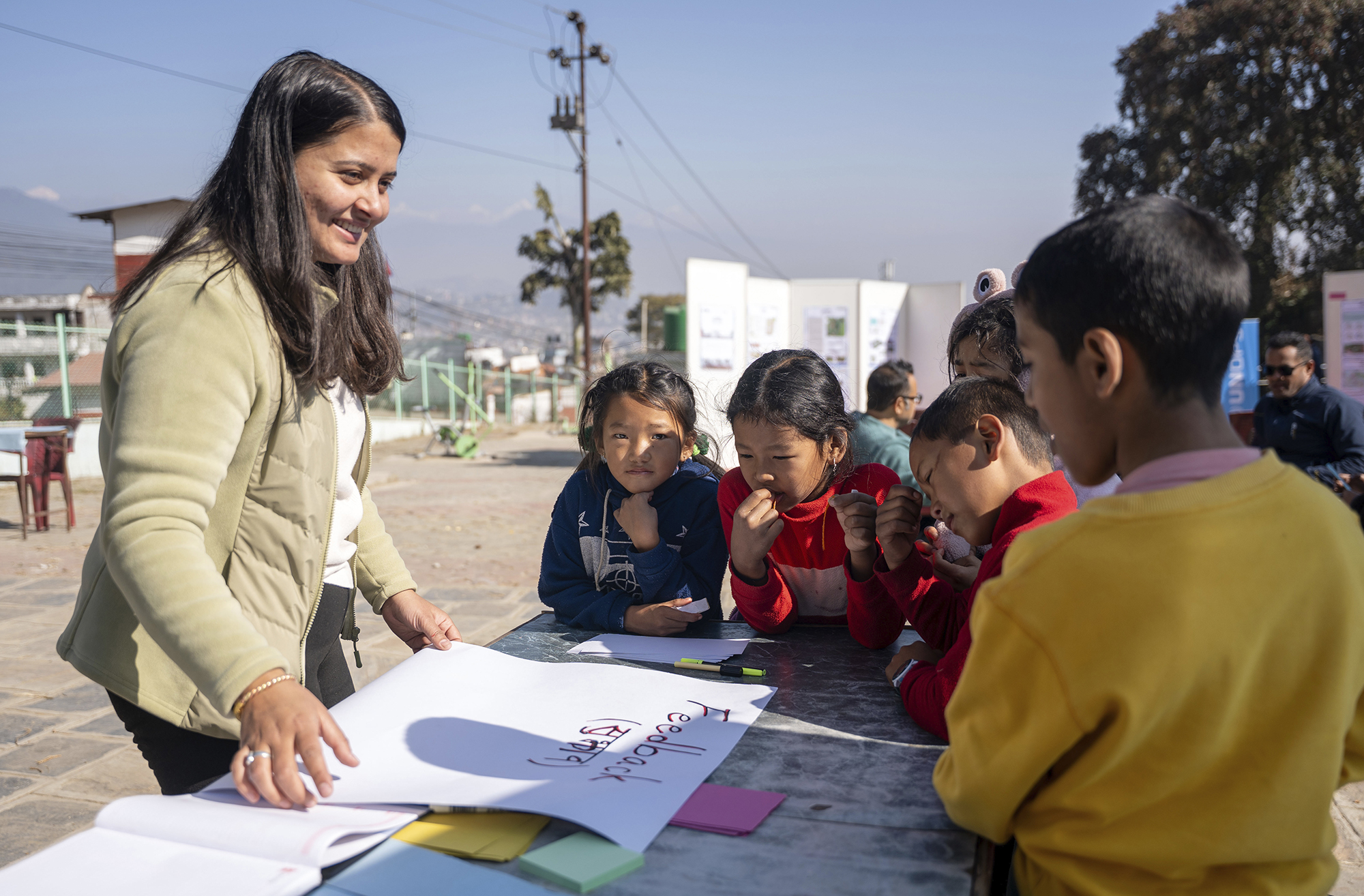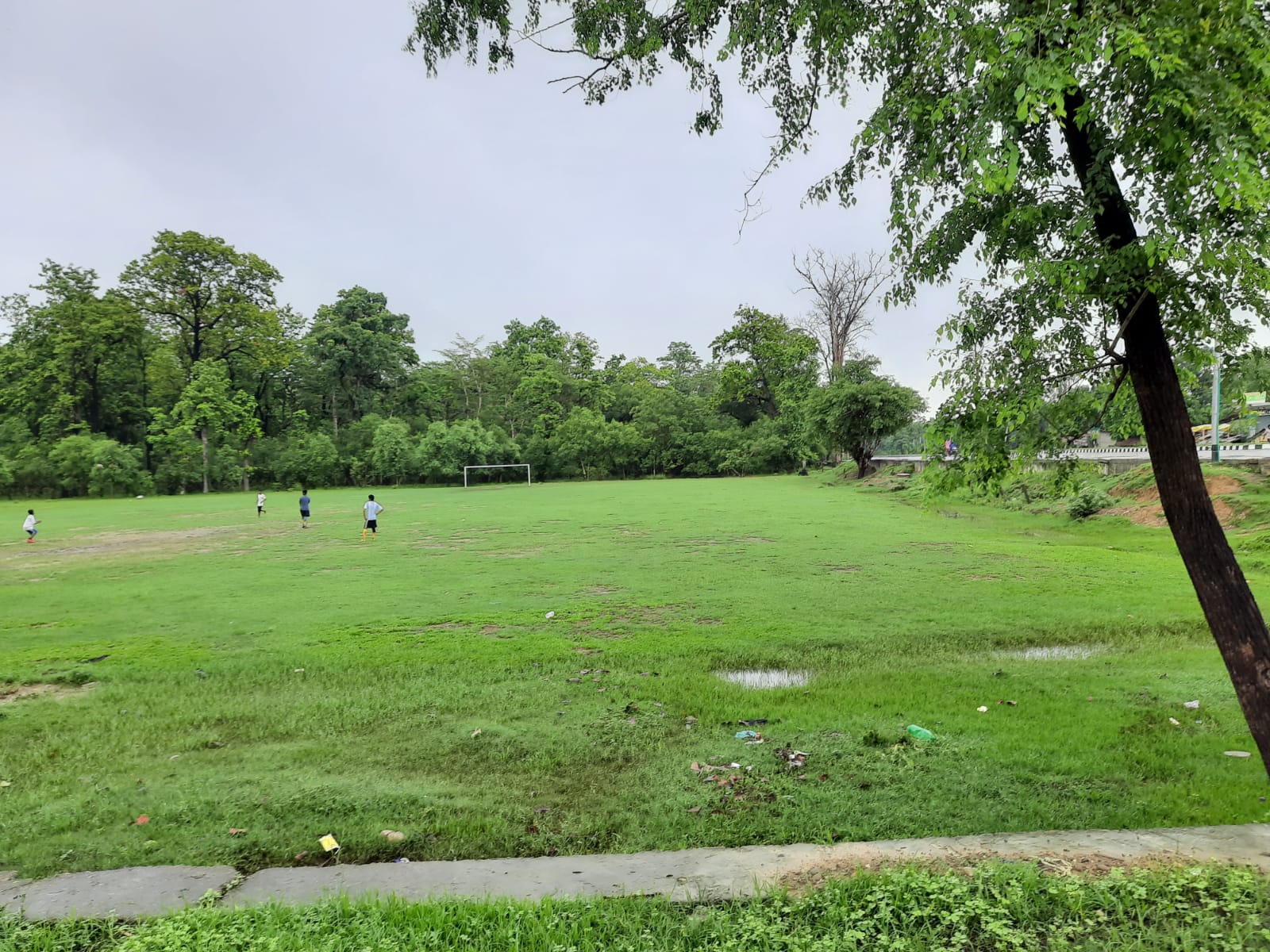
Asia’s dynamic cities have driven economic growth in the region, but they must prepare for climate change and expand basic services as well as education to keep up with ongoing demographic growth if that success is to be sustained in the coming decades, warns UN-HABITAT’s State of Asian Cities Report 2010/11.
While Asian cities already epitomise the successful integration of the region into the international economy over the past two decades, the economic benefits of the region have not been equally distributed, as testified by slums and enduring poverty.
The report makes a number of recommendations to help Asia’s cities become more inclusive and remain economically competitive in the future:
- Tackle slums and urban poverty effectively. Asia’s cities are continuing to expand; over the next decade, Asian cities are expected to absorb two-thirds of the growth in the world’s urban population. However, basic services such as housing and sanitation are not following suit, and Asia hosts over half of the world’s slum population. The report urges Asian countries to include urban affairs in national development policies and accommodate the needs of all citizens – poor, young or elderly. Political will must continue to combine with institutional reform in order for cities to accommodate the basic needs of their growing populations.
- Improve education to create economic opportunities for the formal and informal sectors. Asian cities owe a fair amount of their vibrancy and resilience to a large, low-income informal sector, which must be recognised by policymakers. Streamlined procedures would gradually bring informal entrepreneurs into the mainstream economic and facilitate foreign direct investment. A better-educated workforce would improve the capacities of both the formal and informal sectors to take advantage of opportunities in global and domestic markets.
- Address the challenges of pollution and climate change that threaten Asia’s successful model. No other region is more exposed to natural disasters than Asia. The effects of climate change, such as rising sea levels, could at some point turn millions of Asian urban dwellers into climate refugees virtually overnight. This vulnerability to climate change is compounded by pollution that has resulted from the region’s current growth model. Adaptation and mitigation are needed, and better-balanced, sustainable prosperity would put Asia in a stronger position to face these threats.
Examples of good practice in slum upgrading
The report includes a number of case studies from the region and identifies two examples of slum upgrading initiatives that show how public authorities, communities and business can work together to improve living conditions for slum dwellers.
In Cambodia, the Urban Poor Development Fund provides low-interest loans for housing, improved settlements and income generation for the benefit of urban poor communities that are actively involved in a community savings process. Loans are made only to communities, not to individuals, through their savings groups. In addition to providing a source of much-needed affordable credit, the Fund also supports the urban poor in several ways: by adding capital to community savings to help people overcome financial constraints and by supporting community innovations in housing, settlement improvements as well as negotiated tenure formats that demonstrate fresh solutions and test new kinds of institutional set-ups.
In Sri Lanka, community contracts have become a popular and effective way of facilitating community participation in infrastructure provision. A community contract is a procurement system that involves residents in the planning and deployment of infrastructure in their own neighbourhoods. It provides for a variety of issues such as form of contract, legal status, sharing costs, responsibilities, risks, penalties for non-fulfillment and performance monitoring. Not only is community contracting more cost-effective than work done by private construction firms, the contracts are faster to process and more transparent. In addition, they give residents a sense of ownership and attachment to the facility, ensuring long-term maintenance and sustainability.
Released earlier this month, the report is the first of its kind by UN-HABITAT. It is the result of the collaborative effort between UN-HABITAT and its three partners: UN Economic and Social Commission for Asia and the Pacific (ESCAP), UN Environment Programme (UNEP), and the United Cities and Local Governments – Asia-Pacific Regional Section (UCLG-ASPAC).
For More Information




